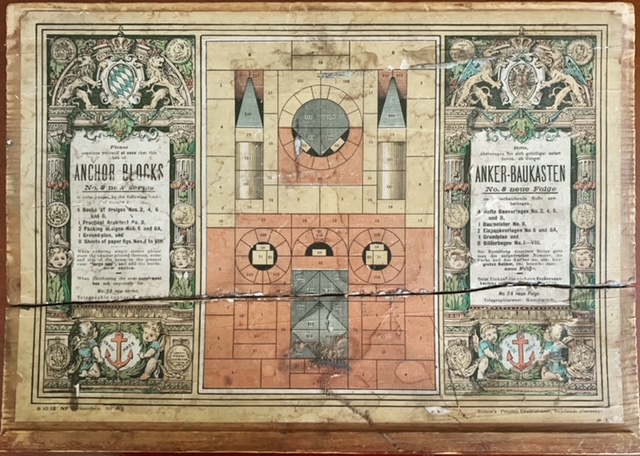Following up on my last post, a few more words about a child's creative imagination.
I will begin with LEGOs. You may have had them when you were young. If you are old enough, you may have had them made out of a kind of composition material, before they went plastic. Today, you can buy sets to make everything imaginable out of LEGOs. Which is great fun for children and the adults in their lives. Originally, they were more like building tools that a child could build whatever they imagined.
Before that, and still around today if you look hard enough, there were wooden building blocks. In basic shapes, squares, rectangles, triangles, columns, arches. Some were all in the same wood tone, others were finished in colors. Again these were primarily created to be a set of tools from which a child could built whatever they imagined. If the child then asked the adults in their lives to comment on what they had built, naturally, the adult would comment favorably. Thus building self-esteem and confidence, and promoting more of the same sort of creativity.
Before that, and perhaps going back to the very beginning, there were Frobel blocks. Made out of maple, they were part of Friedrich Frobel's kindergarten system of childhood education. The bocks were among the "gifts" that were to be presented to the child in an orderly sequence, to stimulate their imagination and to hone their spacial and aesthetic perceptions.
Frobel's kindergarten movement began in Germany, and got a big boost in the USA at the 1876 Centennial Exposition in Philadelphia. The concept of early childhood education that we still provide today, began with him. The many who attended the fair got to see his "gifts" first hand. Some of them brought the concept home with them, and either used his method for teaching at home, or founded kindergartens which at that time were not yet part of public school education. These were the early figurative and literal building blocks for young hands and minds.
One of the people who brought the idea home from the fair was a woman by the name of Anna Lloyd Jones Wright. Yes, Frank Lloyd Wright's mother. She introduced Frank to the Frobel system - some say around the age of nine - which, if our record of Wright's birth year of 1867 is correct, makes it more than likely. Wright took to the Froebel gifts like a duck to water. Many years later he had this to say:
"For several years I sat at the little kindergarten table top ruled by lines about four inches apart each way, making four inch squares; and among other things, played upon these "unit-lines"with the square, the circle, and the triangle - these were smooth maple-wood blocks. All are in my fingers to this day."
From Frobel and the kindergarten, the block concept took a few more steps until it became widespread among children;'s toys. A pair of brothers, Otto and Gustav Lilienthal, first marketed a stone version of these blocks. They were brilliant inventors but poor businessmen, and their product didn't catch on. But later, F Ad. Richter purchased the rights and the tooling to make them, and advertised them heavily. In 1880, 42,000 sets of his Anchor Blocks were sold.
If you were lucky to have a family collection of very old toys, perhaps you had one of his sets of Anchor Blocks. There wee squares, rectangles, triangles, arches, and a few more shapes, with which you would be able to build various buildings. Many ideas were presented to you in an accompanying booklet. But you could also make up whatever you wanted to build, to let your imagination flow freely.
When I was a kid, one of my best friends, Scott, had a big set of Anchor Blocks at his house. They had belonged to his grandmother when she was a child, back in the late nineteenth century. His mother also played with them when she was young in the 1930s. From time to time, we would too, usually on a rainy day as an indoor activity. I had no idea of the history, but I thought those blocks were amazing. I still do.
These blocks can still be found today, wherever vintage items are sold. You have to seek them out. And they might set you back a bit. Judy found a set for me some yaers ago, and this week I decided it would be good to get them out of the cabinet where they were carefully stored, and build something that we could enjoy. The end result is shown in the photos with this post.












